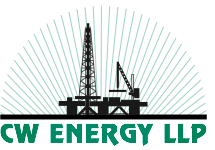Energy Profits Levy (EPL) is a temporary levy introduced with effect from 26 May 2022 on the profits of companies producing oil and gas in the UK or on the UK Continental Shelf. It was introduced to capture a perceived windfall for industry arising as a result of the significant increase in oil and gas prices during 2022 primarily as a result of the Russian invasion of Ukraine.
The Levy applies to company’s ring fence profits and is charged as if it were an amount of Corporation Tax. The ring fence tax base is adjusted to disallow financing and decommissioning costs. Petroleum revenue tax repayments attributable to losses generated by decommissioning expenditures are not chargeable to the Levy, but other PRT repayments are brought in. Certain expenditures are uplifted in calculating the tax, the uplift being termed additional expenditure, as set out below.
The rate of Levy was set at 25% for profits arising from 26 May 2022 to 31 December 2022 and 35% for profits arising from 1 January 2023 to 31 March 2028. Where a company has an accounting period which straddles the relevant commencement, rate change or end dates, the periods before and after the relevant date will be treated as separate accounting periods and profits must be apportioned on a just and reasonable basis between the periods.
Collection and management of EPL follows rules of Ring Fence Corporation Tax (RFCT) rules in respect of returns, payments, enquiries, assessment, information powers, penalties, interest and appeals.
A new return, the so called ‘Quantification Notice’ is required to be submitted to HMRC specifying the amount of EPL payment included within any payment made, the accounting period it relates to, UTR number and the expected date of payment. Failure to meet the notification requirement can lead to initial penalty of £300 followed by daily penalties up to £60.
Additional expenditure
An allowance or uplift is available where a company incurs qualifying “investment expenditure”.
The rate of uplift is 80% for expenditure incurred from 26 May 2022 to 31 December 2022 and 29% from 1 January 2023 to 31 March 2028.
The 80% uplift rate is to be maintained for decarbonisation expenditure.
Capital expenditure will qualify as investment expenditure. In addition, certain operating expenditure aimed inter alia at increasing the rate at which, or the number of years for which oil can be produced will qualify. Finally certain lease payments in respect of leases with a term of at least 5 years will qualify for the uplift.
As with the basic EPL deduction, financing or decommissioning costs do not qualify There are also rules to prevent relief for second hand expenditure and anti-avoidance rules to prevent relief where expenditure is incurred for a disqualifying purpose, which targets certain arrangements where one of the main purposes of the arrangements is to secure a levy advantage.
The relief is not field specific and unlike the SCT Investment allowance the amount of uplift is automatically deducted in calculating the levy profit or loss.
There are restrictions to ensure that the expenditure benefitting from the uplift is in fact new investment, rather than just “recycled” costs, for example where assets change hands.
Levy losses
CT losses are not deductible for EPL purposes. Instead, the scheme has its own loss regime dealing with Levy losses generated on or after 26 May 2022.
Any qualifying Levy loss may be carried forward or back or group relieved against levy profits subject to the normal CT rules. A Levy loss can be offset against the profits of the previous 12 months, with the carry back extended to 3 years in the case of a “terminal loss”. Unrelieved qualifying levy losses can be carried forward to subsequent levy periods and set off against levy profits so long as the company continues to carry on the ring fence trade.
A separate Levy group relief regime applies which also mirrors the CT regime. Change in ownership and transfer of trade restrictions apply.
